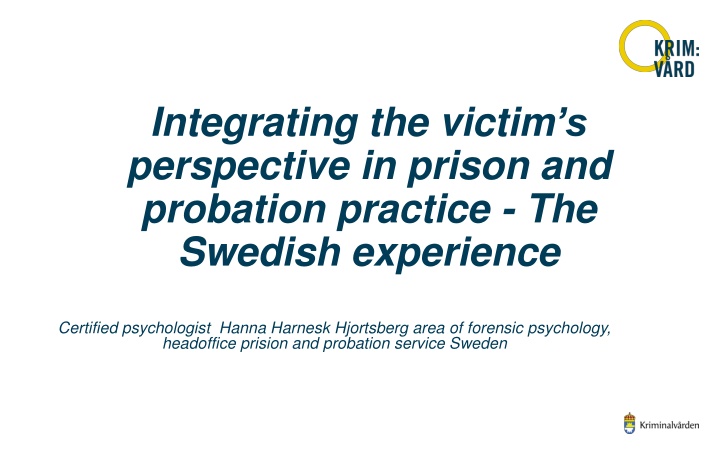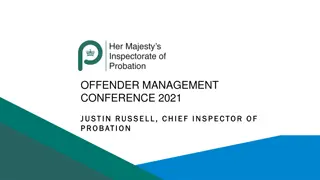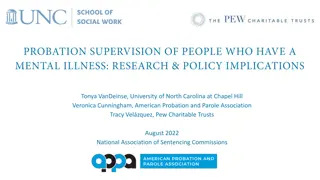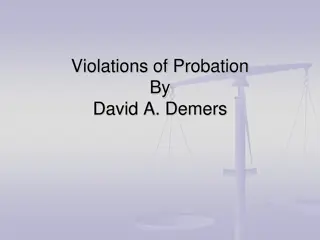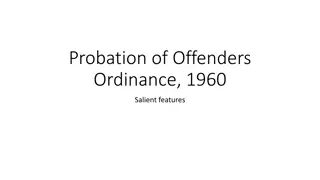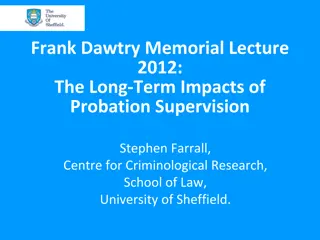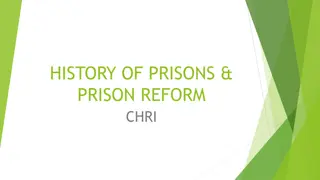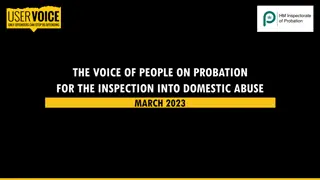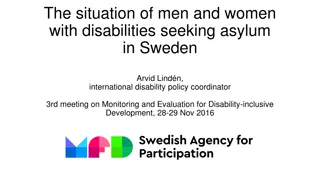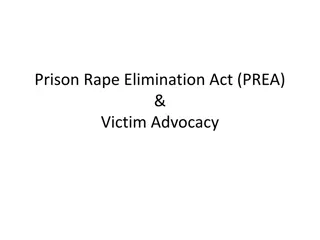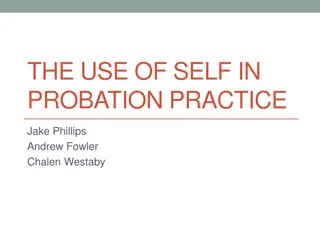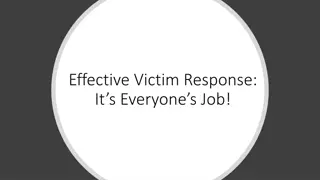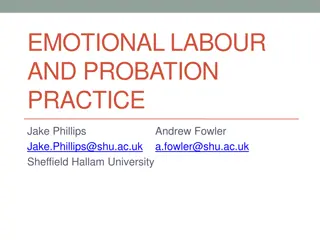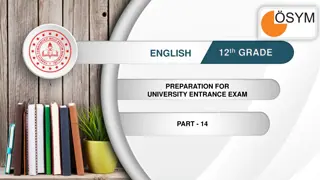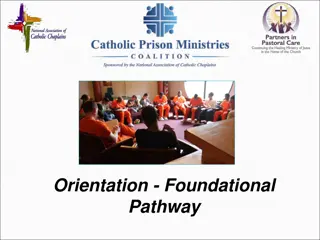Integrating the Victim's Perspective in Prison and Probation Practice: Insights from Sweden
Explore the Swedish experience of integrating the victim's perspective in prison and probation practices as shared by certified psychologist Hanna Harnesk Hjortsberg. The discussion includes maintaining a balance between the best interests of the child, victim protection assignments, victim issues, meetings between offenders and victims, and a case study highlighting contact within the framework of victim information.
Download Presentation

Please find below an Image/Link to download the presentation.
The content on the website is provided AS IS for your information and personal use only. It may not be sold, licensed, or shared on other websites without obtaining consent from the author.If you encounter any issues during the download, it is possible that the publisher has removed the file from their server.
You are allowed to download the files provided on this website for personal or commercial use, subject to the condition that they are used lawfully. All files are the property of their respective owners.
The content on the website is provided AS IS for your information and personal use only. It may not be sold, licensed, or shared on other websites without obtaining consent from the author.
E N D
Presentation Transcript
Integrating the victims perspective in prison and probation practice - The Swedish experience Certified psychologist Hanna Harnesk Hjortsberg area of forensic psychology, headoffice prision and probation service Sweden
Balance between 2 sometimes conflicting aspects of the best interest of the child The child s right to contact with the parent The child s right to protection from the parent
Victims protection assignment Contribute in meetings between victim s and convicted offenders Limit destructive contacts based on applicable legislation; such as risk of injury/harm, security for the victim or others , or when its considered to counteract the inmates re-integration into society
Victim issues why does the child not tell? Hear no evil Tells seldom voluntarily Needs a long time to be able to tell See no evil Only what is documented Missing words Speak no evil Not aware Shame, guilt Threats, fear of consequences normalized to violence
Meetings between offenders and victim s Meetings can only bee arranged based on the victim s best interest and with the victim s best intrest in mind The benefits for the victim s has been obvious. Reduce fear, deal with practical issuse, questions about the crime, clear out uncertienties concerning the future or plans for common children. Regarding custady related issues and so on (Secondary) benefits for the treatment of the offenders such as the possibility for the offender too take responsibility for the crime and its consequensies
Case - Ricard Contact within the framework of victim information Ricard is sentenced for depriving his ex-girlfriend of her life, due to his young age he was sentenced to a shorter prison term for his crime During the trial, he was perceived as emotionally turned off and cold The victim s mother expressed a wish for some form of contact / communication with the client before he was realesed from prison.
Case Ricard The motive for the meeting was the number of clarifications, she had a desire to ask certain questions and get answers and end the contact with the offenders Ricard 5 people participated, 4 in the direct visitor room, one to support the mother in the room next door. The meeting was recorded What happened? Why? Some specific circumstances surrounding the crime
Case Sven An elderly Swedish man with a massive criminal record of sexual offending behaviour against children Sexual intrest in young girls -Sexual deviant Access to victim s Context of incest
Victims protection must be seen as a cohesive process (read thread) throughout the offenders sentence and in all parts of the system Risk assesment Probation Probation Jail Prision Sanction proposal Choise of prision placement dialogue between the prison service units Vitims awareness in documentaton, treatment and risk management plan an so on
Thank you for your attention! Children begin by loving their parents; as they grow older they judge them; sometimes they forgive them /Oscar Wilde Hanna.harneskhjortsberg@kriminalvarden.se
